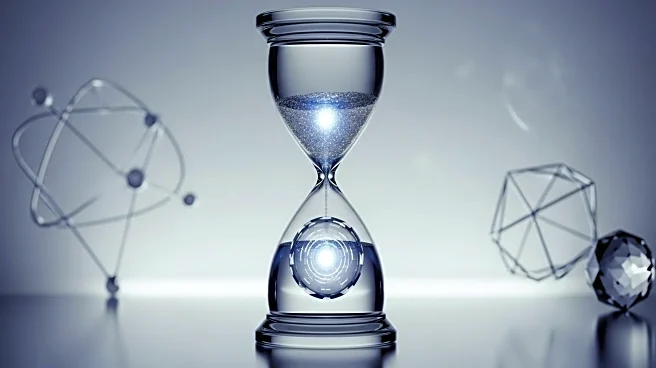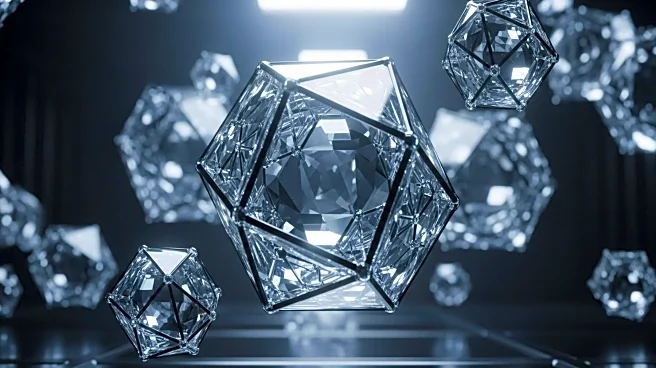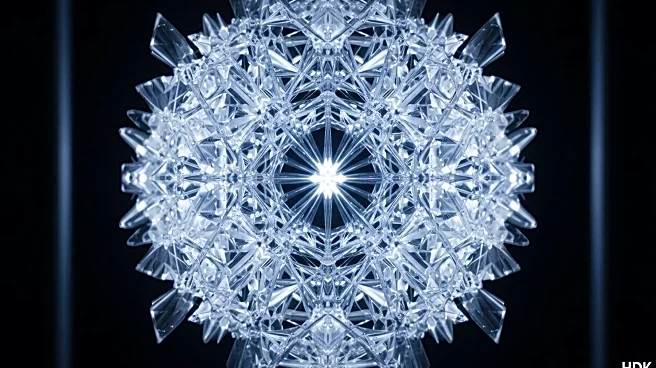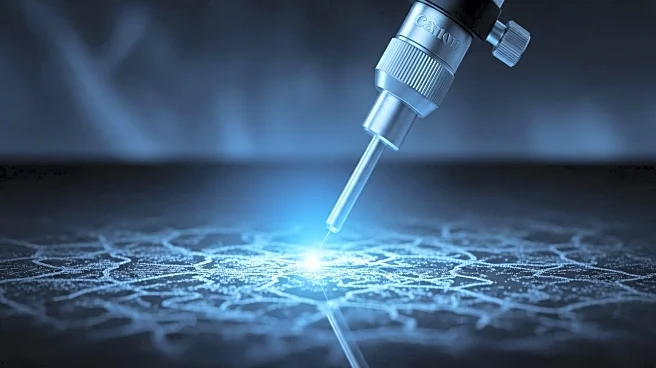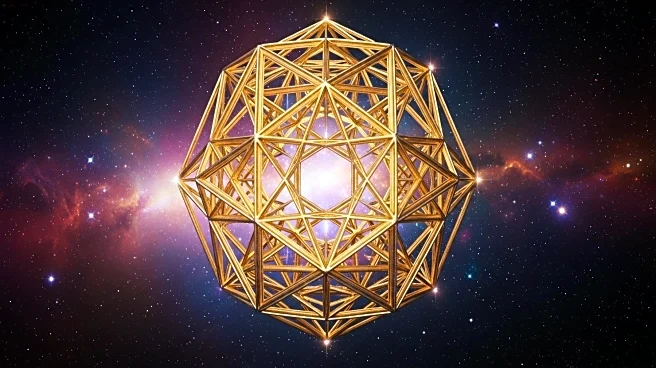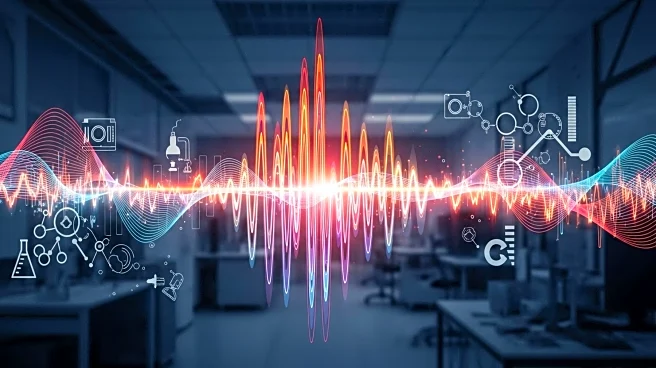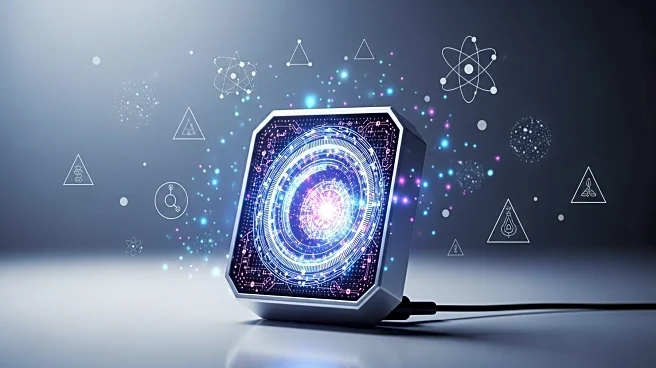What's Happening?
Physicists at the University of Colorado Boulder have successfully created a new type of time crystal that can be observed directly by humans. This advancement utilizes liquid crystals, similar to those found in phone displays, to form a phase of matter where particles are in constant motion. The research, led by Hanqing Zhao and Ivan Smalyukh, involves designing glass cells filled with rod-shaped liquid crystal molecules that move in repeating patterns when exposed to light. This development marks the first time a time crystal can be seen with the naked eye, potentially opening up various technological applications.
Why It's Important?
The creation of visible time crystals represents a significant breakthrough in physics, offering potential applications in various fields. These crystals could be used in anti-counterfeiting measures by incorporating them into currency, where a light-induced pattern could verify authenticity. Additionally, stacking multiple time crystals could enable the storage of large amounts of digital data, presenting opportunities for advancements in data storage technology. The ability to observe these crystals directly may also lead to new insights into the behavior of matter and the development of novel materials.
What's Next?
The researchers suggest that the applications of time crystals are vast and could be explored further. Future studies may focus on refining the technology to enhance its practical uses, such as improving data storage capabilities or developing new anti-counterfeiting techniques. The team is optimistic about pushing the boundaries of this technology in various directions, potentially leading to innovative solutions in material science and beyond.
Beyond the Headlines
The development of time crystals touches on deeper scientific concepts, such as the nature of time and matter. It challenges traditional understandings of how particles interact and move, offering a glimpse into the complex dynamics of matter. This research could inspire further exploration into the fundamental properties of time and space, potentially leading to new theories and models in physics.
